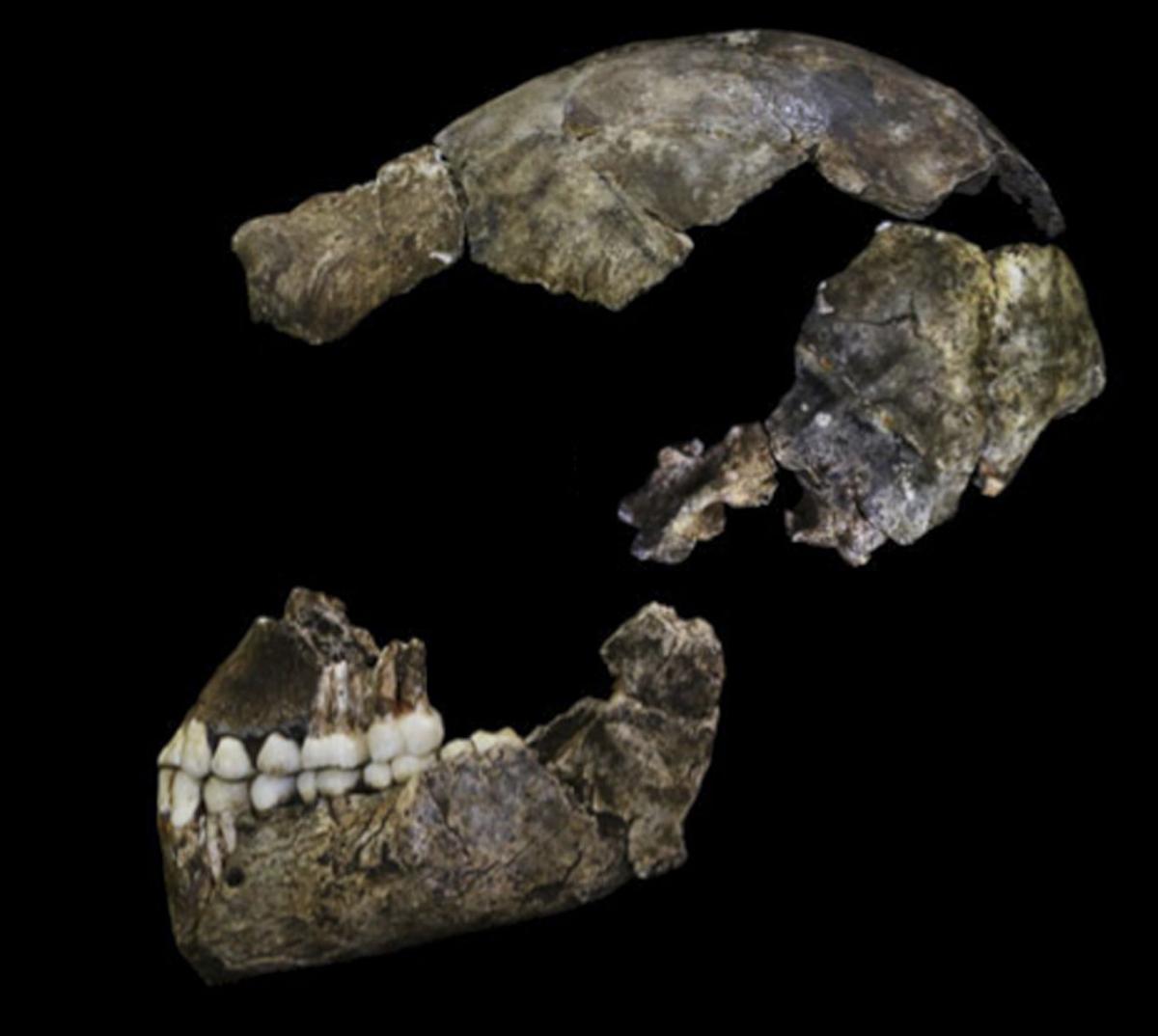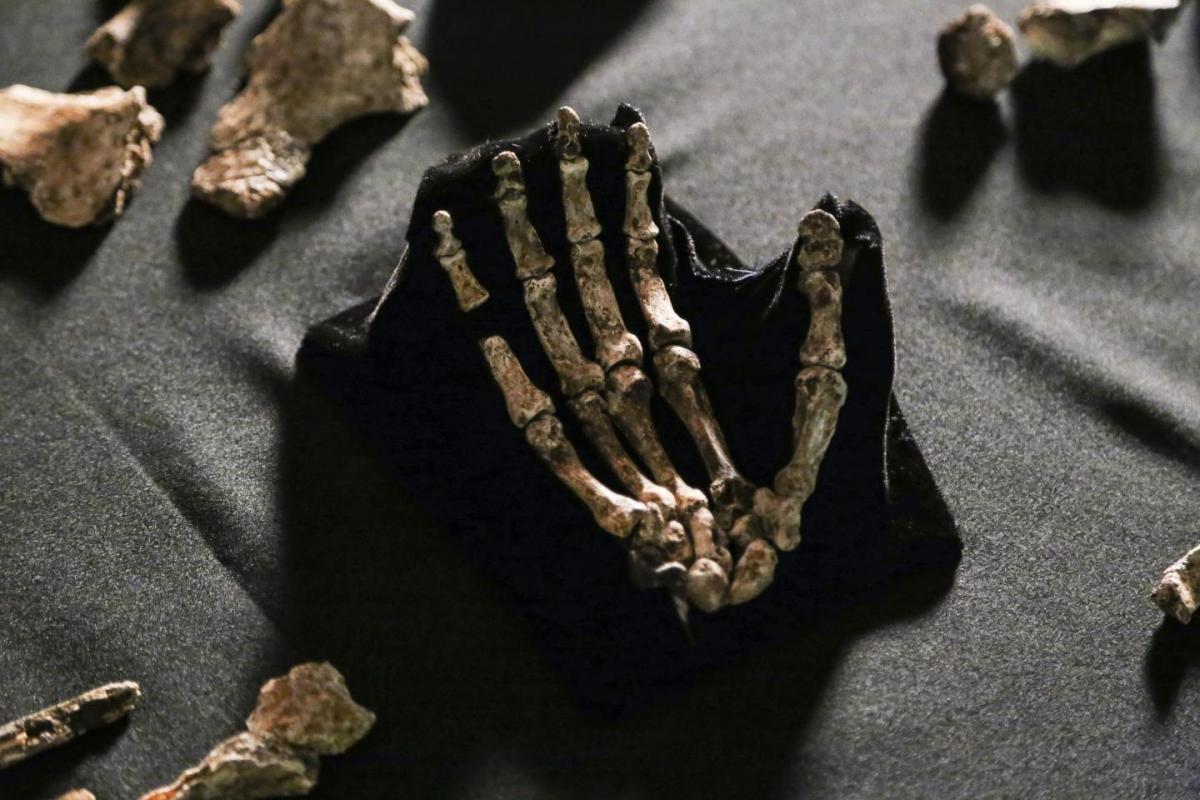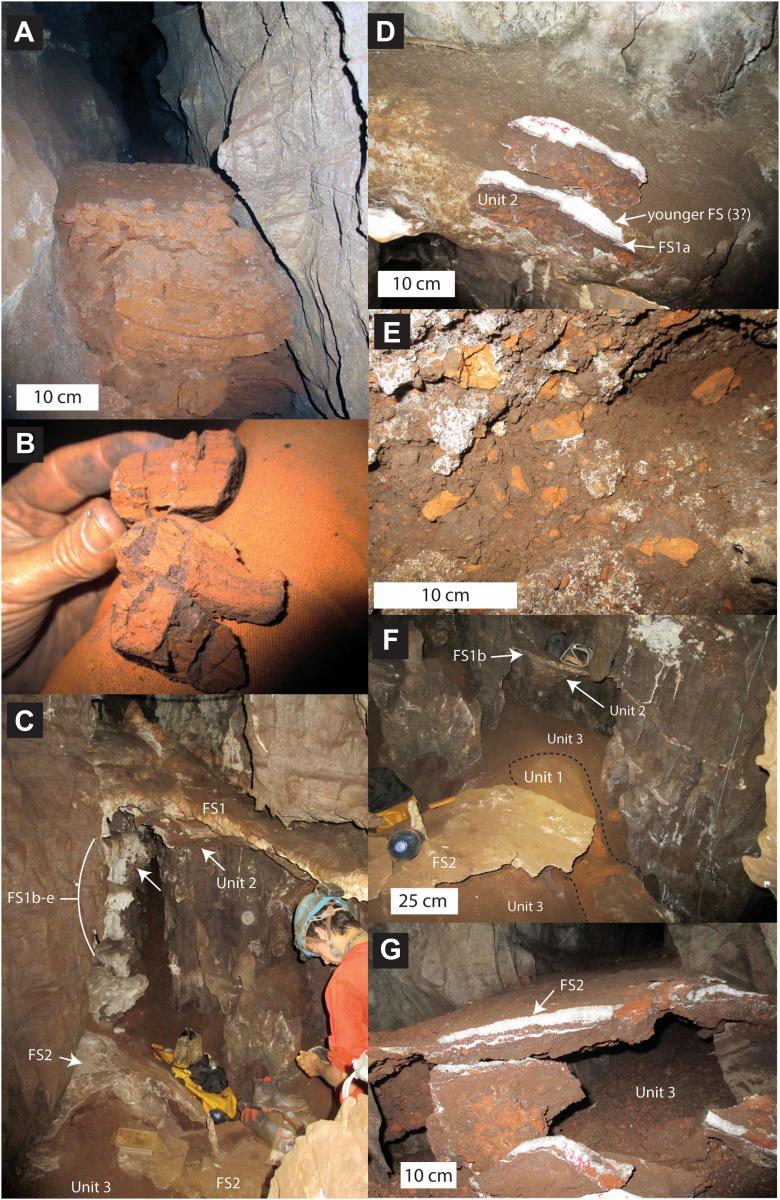 In Part 1 of this post, I described the unlikely discovery and pretty fantastic recovery of a major cache of heretofore-unknown hominin bones. In Part 2, I laid out the mosaic traits of the new species, Homo naledi, and talked about how the consensus came to be that despite its tiny orange-sized brain, this species used fire to light their way through the cave to repeatedly and deliberately dispose of their dead. All of this, I’d argue, is just awesome. A new hominin with a tiny, but apparently pretty powerful brain, was navigating cave passages Indiana Jones style to dump dead bodies? That’s just fabulous and interesting and enough to make me want to go back in time to become a paleoanthropologist! But unfortunately, there is one big, glaring issue with the discovery that is preventing it from reaching its full “find of the century!” potential: No one knows how old the bones are because they aren’t embedded in dateable sediments or rocks.
In Part 1 of this post, I described the unlikely discovery and pretty fantastic recovery of a major cache of heretofore-unknown hominin bones. In Part 2, I laid out the mosaic traits of the new species, Homo naledi, and talked about how the consensus came to be that despite its tiny orange-sized brain, this species used fire to light their way through the cave to repeatedly and deliberately dispose of their dead. All of this, I’d argue, is just awesome. A new hominin with a tiny, but apparently pretty powerful brain, was navigating cave passages Indiana Jones style to dump dead bodies? That’s just fabulous and interesting and enough to make me want to go back in time to become a paleoanthropologist! But unfortunately, there is one big, glaring issue with the discovery that is preventing it from reaching its full “find of the century!” potential: No one knows how old the bones are because they aren’t embedded in dateable sediments or rocks.
*sigh*
 As I discussed in my post on the four-limbed snake, if you can’t pinpoint the age of a fossil find it’s a big problem. Age gives context and you can’t draw firm evolutionary conclusions without context. Geologists infer that Rising Star cave where H. naledi was found is less than 3 million years old, so there seems to be a firm “oldest possible” date, but that doesn’t help a whole lot. Does H. naledi represent a root of the Homo genus? Or is it something younger, representing an as-of-yet unknown twig of the hominin tree? We don’t know. Paleoanthropologist William Jungers said it well: “Without a date, these fossils are more curiosities than game-changers…Where they fit in the family tree will be influenced by their age—[right now] they are a twig, looking for a trunk.”
As I discussed in my post on the four-limbed snake, if you can’t pinpoint the age of a fossil find it’s a big problem. Age gives context and you can’t draw firm evolutionary conclusions without context. Geologists infer that Rising Star cave where H. naledi was found is less than 3 million years old, so there seems to be a firm “oldest possible” date, but that doesn’t help a whole lot. Does H. naledi represent a root of the Homo genus? Or is it something younger, representing an as-of-yet unknown twig of the hominin tree? We don’t know. Paleoanthropologist William Jungers said it well: “Without a date, these fossils are more curiosities than game-changers…Where they fit in the family tree will be influenced by their age—[right now] they are a twig, looking for a trunk.”
Berger insists that they are working on ways to pin the age down, but as some methods would involve destroying bones, they wanted to catalogue them all before they tried. He also is confident that “no matter what the age, [H. naledi] will have a tremendous impact.” And I’d agree with that—we know it’s new, so it can’t help but give us new insights into human evolution, no matter where on the tree it ends up...but the sooner we know the “when” the better.
I began Part 1 of this series by saying that “I can’t imagine any biology teacher won’t want to spare a few minutes from the back-to-school “here’s how science works” introduction to talk about [this new discovery].” To bring us full circle, I want to discuss a few ways educators can bring H. naledi into your classroom. I read last night about one lucky teacher from Dallas, TX, who was able to show his students videos of himself interviewing Lee Berger in South Africa. The teacher, John Mead, had formed a friendship with Berger and had the means to travel to South Africa several times to visit while the H. naledi drama was unfolding. So, right after the official announcement of its discovery was made, Mead was able to show videos he had made in South Africa to his students.
 Obviously, that is not possible for most of you (though Mead did make his videos available online). But you don’t need to have such insider access to bring Homo naledi into your lesson. Simply telling this story to your students will help to dispel so many misconceptions about how science works. There are no lab coats in sight, for one, and far from this being a solitary pursuit, Berger assembled a huge team to help him get the bones and then describe the finds. And the finds aren’t about facts that you need to memorize, they’re dynamic inferences subject to change when new information becomes available. This is real discovery in real-time.
Obviously, that is not possible for most of you (though Mead did make his videos available online). But you don’t need to have such insider access to bring Homo naledi into your lesson. Simply telling this story to your students will help to dispel so many misconceptions about how science works. There are no lab coats in sight, for one, and far from this being a solitary pursuit, Berger assembled a huge team to help him get the bones and then describe the finds. And the finds aren’t about facts that you need to memorize, they’re dynamic inferences subject to change when new information becomes available. This is real discovery in real-time.
And there is another reason to talk about Homo naledi: this is our story. Wherever it ends up on the tree, Homo naledi is on OUR tree. It’s more evidence that evolution isn’t something separate that happened once upon a time to finches and lizards and snails—it happened and is happening to us.
I’ll leave you with the first exchange between myself and Briana Pobiner, my paleoanthropologist friend, about this discovery:
Me: Hiya! I’m going to be writing up something general for the blog on H. naledi. Would you be willing to contribute or fact check me? I have my big picture already figured out: Human ancestors are awesome.
Briana: Sure… and heck yeah! Hominins are always awesome.
So there you have it, from the mouth of an expert. Why bring H. naledi into your classroom? For all the reasons described above, or simply because of the fact that hominins are always awesome.
Are you a teacher and want to tell us about an amazing free resource? Do you have an idea for a Misconception Monday or other type of post? Have a fossil to share? See some good or bad examples of science communication lately? Drop me an email or shoot me a tweet @keeps3.

